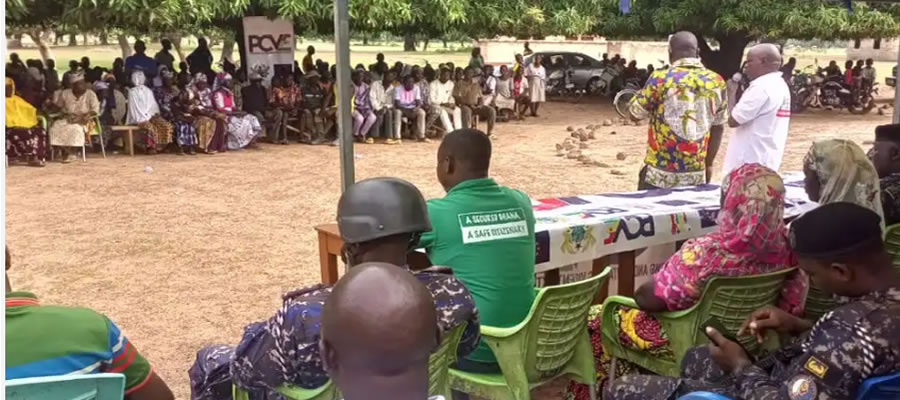

Health infrastructure
The CHPS programme is now a key to Health delivery system and that partly explains why the assembly focuses so much in the provision of CHPS facilities as contained in the figure above.
Accessibility of Health Facilities:
In the absence of a hospital there is only one Health Centre in the District capital playing the role of a hospital, which is ill equipped to function effectively for the people living within and around Garu. As such this health centre, which is located in Garu, needs to be up-graded to a District Hospital.
There are eight (8) clinics. These are Sumaduri Clinic, Denugu clinic, Lord’s clinic, Rabito Clinic, Quality Med. Centre, FAME clinic.
There is the need to provide certain logistics such as motorbikes, fridges, electricity or solar panels for the Health facilities and more personnel to help improve the health situation in the District.
Nurses and Doctor Ratio
- Total Number of Nurses: 93
- Total Number of Doctors: 0
- Nurses/Patient ratio: 1:1,457
- Doctor/Patients Ratio: 0:135,467 (2013)
- Population Doctor Ratio is zero since there is no Doctor
There is no Hospital in the District. The nearest hospital is about 25 kilometres away in Bawku. Coverage is about 60%
The District is not performing badly in the area of EPI.
Health issues with regards to quality assurance are; poor patient referral system, poor continuity of care, poor management of accidents and poor or irrational prescription and use of drugs.
Top Ten (10) Causes of OPD Attendance
The District, because of her geographical location is CSM prone. The common diseases are malaria, Acute IRS, skin diseases and diarrhoea. The table below shows the top ten causes of OPD attendance diseases for the period 2010 to 2012.
There is the need to Sponsor Nurse Trainees, attract and retain personnel, provide relevant infrastructure and control diseases such as malaria, T.B and HIV/AIDS.
Infant Mortality, Maternal Mortality and Other Clinical Issues
The table below provides records on Infant Mortality, Maternal Mortality and other clinical issues.
HIV/AIDS District Response Initiative
In collaboration with Garu Presbyterian Community Based Rehabilitation (CBR) Project, HIV/AIDs campaigns were held in 14 communities in year 2012 where over two thousand 2000 inhabitants received sensitization on sexual abstinence, unprotected sex, condom use and other good practices of prevention and management. This has brought about increased awareness on the dangers associated with the menace in the catchment area.
Challenges
- No DHMT office and District Hospital
- Inadequate health staff
- High number of untrained staff on PMTCT due to inadequate funding
- Frequent breakdown of Nanfang motorbikes due to bad roads
- High fuel consumption due to free referrals of labour and under five cases to Bawku Hospital
- Frequent breakdown of vaccine fridges (especially solar fridges) as most facilities not connected to National GRID
- No structures for some CHPS centres
- Delay in carting food from World Food Programme warehouse at Tamale
HEALTH INSURANCE
The Total Registration in the District for NHIS as at the close of 2013 is Seventy Six Thousand, Three Hundred and Seventeen clients (76,317) thus 56.3% of the projected population for 2013.
The Scheme was previously operating under Bawku
Date Created : 11/20/2017 6:53:30 AM











 facebook
facebook
 twitter
twitter
 Youtube
Youtube
 +233 593 831 280
+233 593 831 280 0800 430 430
0800 430 430 GPS: GE-231-4383
GPS: GE-231-4383 info@ghanadistricts.com
info@ghanadistricts.com Box GP1044, Accra, Ghana
Box GP1044, Accra, Ghana